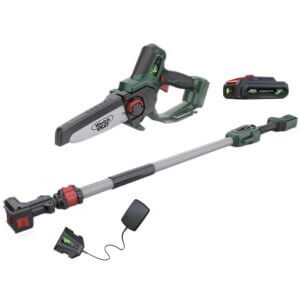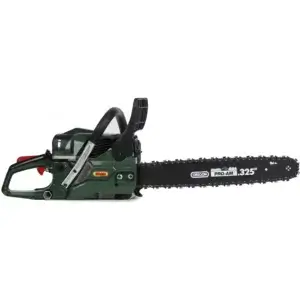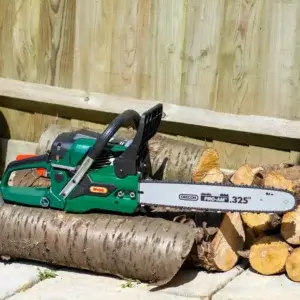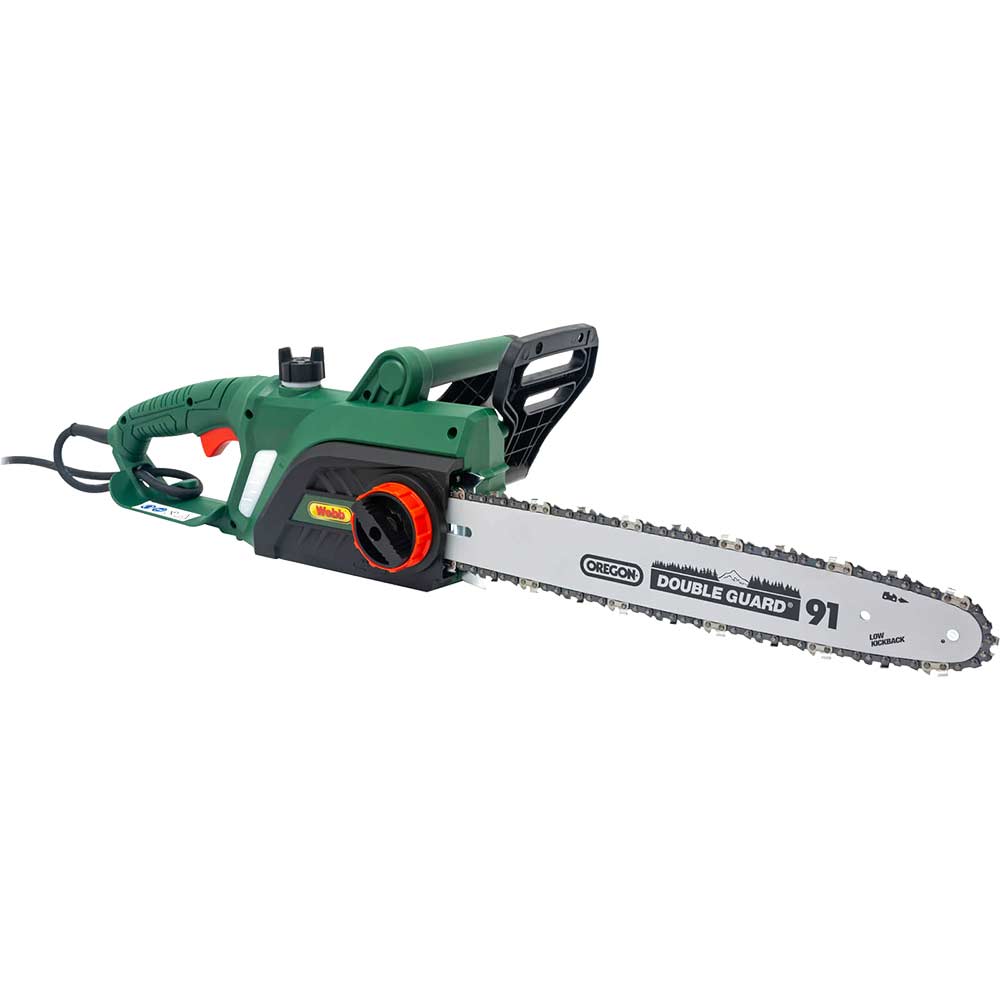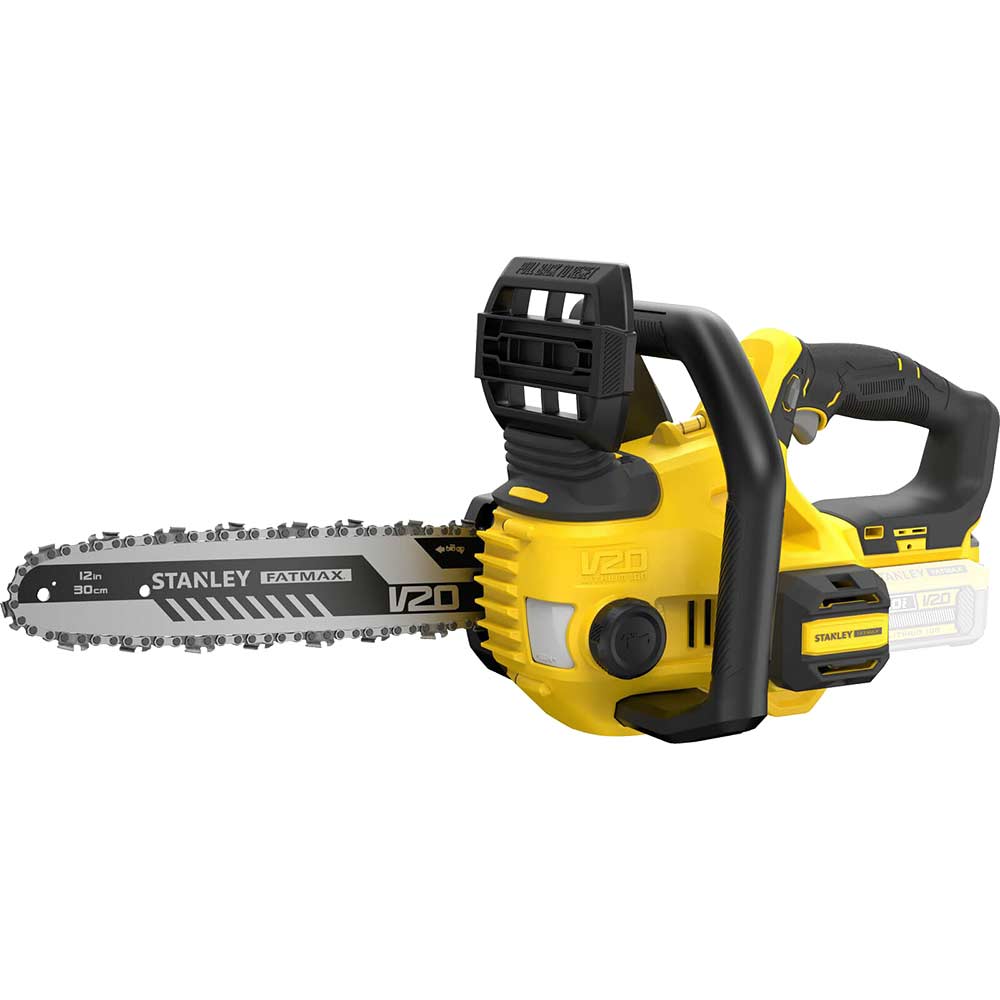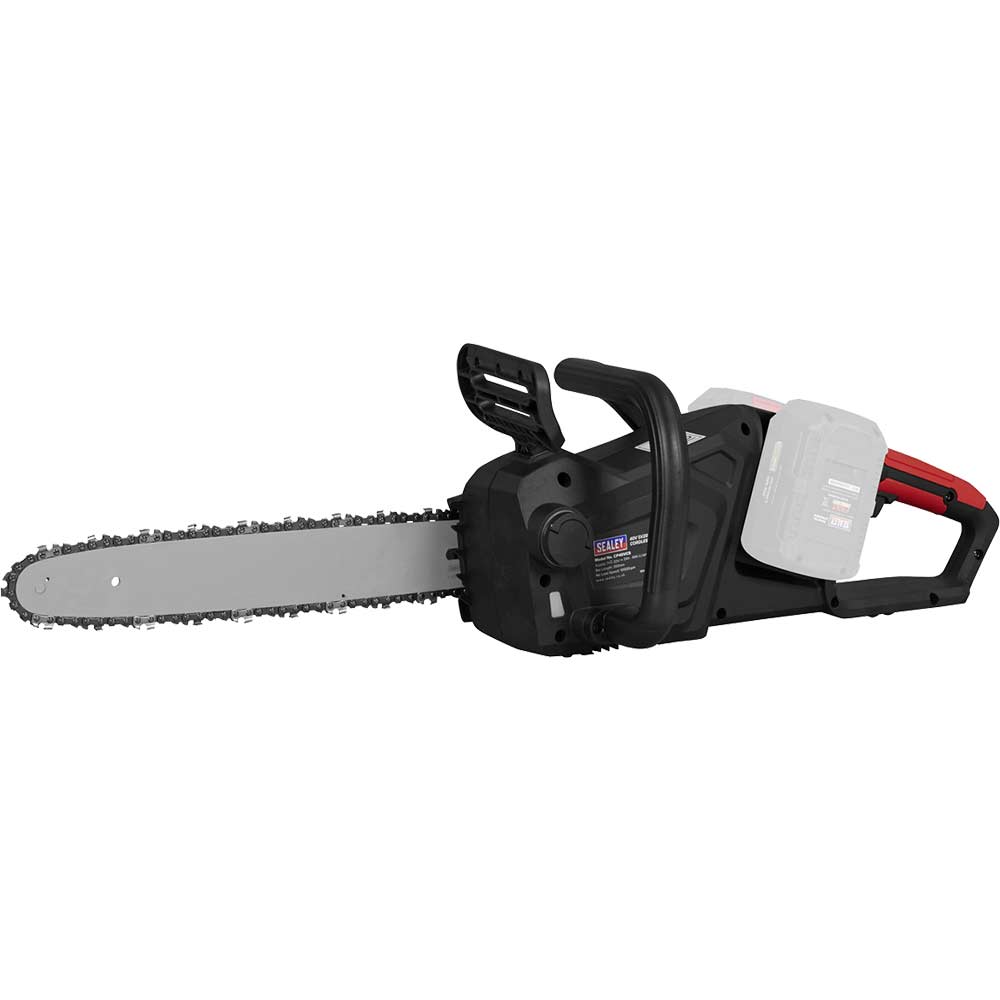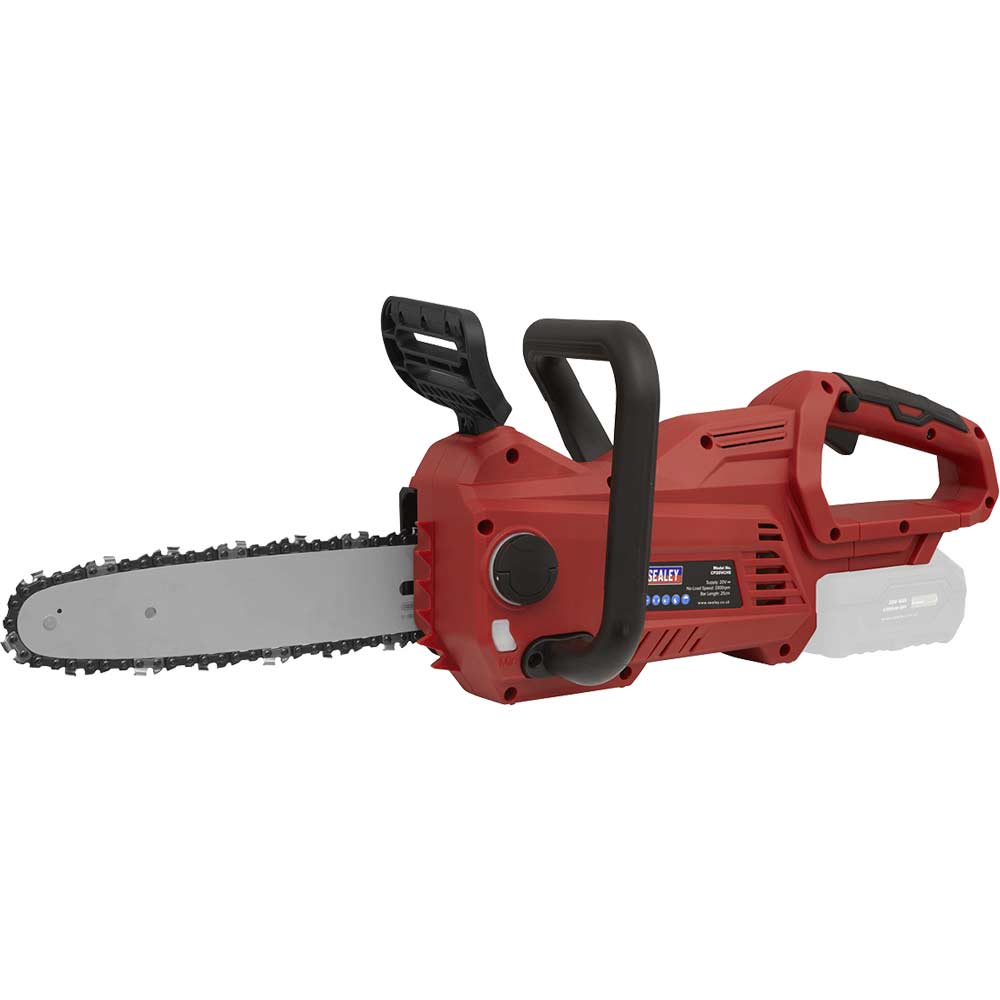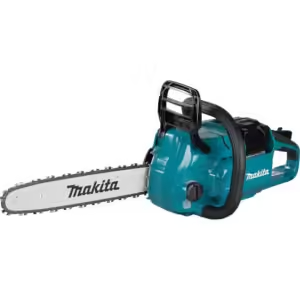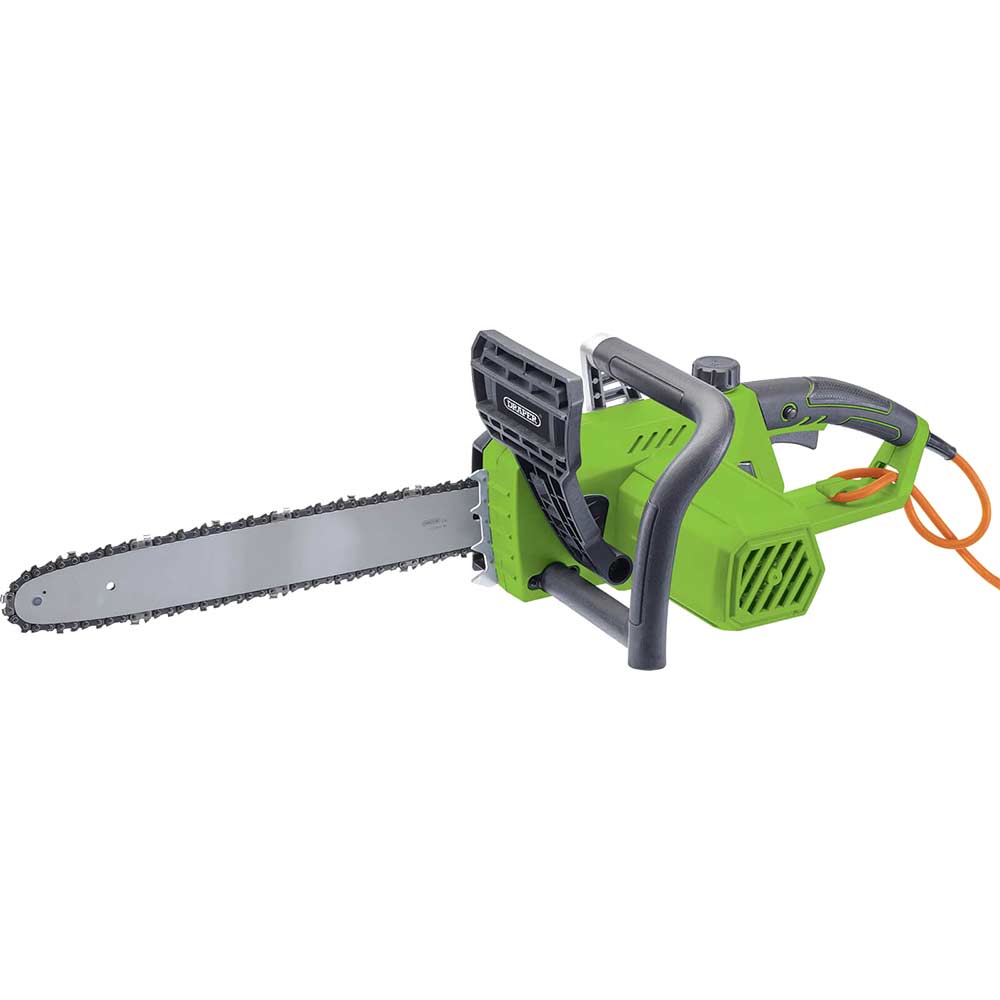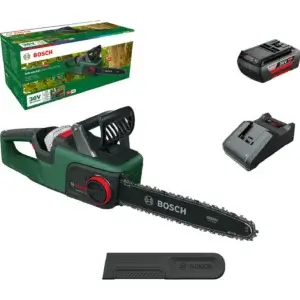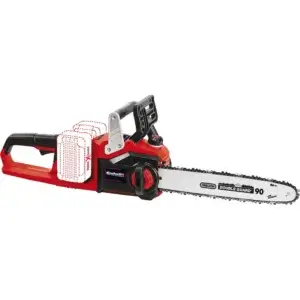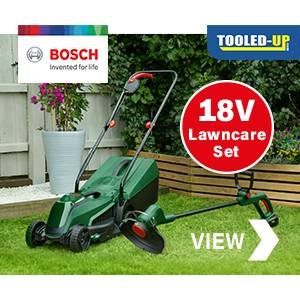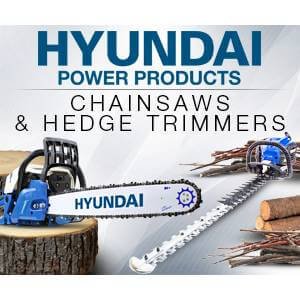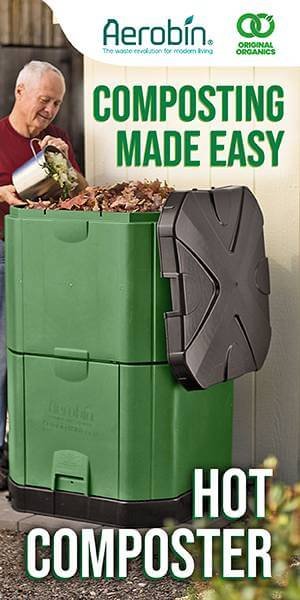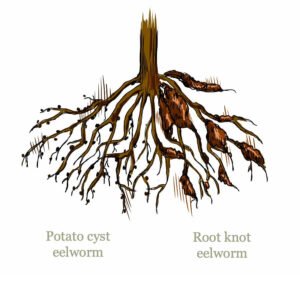When using a chainsaw, many operators overlook the importance of safety gear, putting themselves at risk of serious injury. With statistics showing that improper safety measures result in numerous accidents each year, a thorough risk assessment is essential. This guide covers key aspects of chainsaw safety gear, including head protection, eye protection, and protective clothing. By understanding the necessary equipment, readers can effectively protect themselves while working with wood. Addressing potential hazards and promoting proper safety measures will help ensure that users remain safe and ready to respond with first aid if needed.
Key Takeaways
- Always wear protective gear when using a chainsaw to minimise injury risks
- Proper chainsaw gloves provide cut resistance, grip, and comfort for safer operation
- Select steel-toe boots with slip-resistant soles to protect against falling debris and ensure stability
- Understanding safety standards helps users choose appropriate chainsaw safety gear for maximum protection
- A first aid kit is essential for handling unforeseen accidents while operating chainsaws
Understanding the Importance of Chainsaw Safety Gear

There are several common hazards when using a chainsaw, making safety gear essential for any gardener or professional. Legal requirements and safety standards dictate the proper equipment, including a protective jacket and gloves. This section will explore the key components of chainsaw safety gear, equipping readers with practical insights to reduce risks while working with this powerful tool.
Common Hazards When Using a Chainsaw
Using a chainsaw carries inherent risks that must be acknowledged and mitigated. One common hazard is the potential for accidents occurring due to kickback, where the saw suddenly jerks back towards the operator. Both professional arborists and DIY gardeners must be vigilant when operating this powerful tool, ensuring they maintain a steady grip and proper cutting technique to minimise this risk.
Another significant concern is the exposure to flying debris. When cutting wood, chips and splinters can easily be propelled into the air, posing a risk to the face and eyes. Wearing a reliable face shield can protect the user from these hazards, while lumberjacks and gardeners alike should also consider goggles to enhance eye safety during operations.
Additionally, chainsaw use can expose operators to sharp materials and the risk of cutting injuries, making protective clothing essential. Chainsaw trousers are designed with reinforced fabrics that help reduce the severity of cuts and abrasions. It is crucial for anyone working with a chainsaw to properly equip themselves, as this can be the difference between a minor injury and a serious accident:
| Hazard | Description | Recommended Safety Gear |
|---|---|---|
| Kickback | Saw jerks back towards the operator during use | Protective gloves, safety boots |
| Flying Debris | Chips and splinters potentially causing eye injuries | Face shield, goggles |
| Cutting Injuries | Risk of cuts and abrasions from sharp materials | Chainsaw trousers, protective jacket |
Legal Requirements and Safety Standards
Understanding the legal requirements for chainsaw safety gear is vital for anyone operating this powerful tool. The Personal Protective Equipment (PPE) regulations outline specific standards for chainsaw safety clothing, ensuring that users are adequately protected against potential hazards. For instance, chainsaw trousers must be manufactured with reinforced materials that can withstand cutting incidents, while sturdy leather gloves provide necessary grip and protection from sharp objects.
In the UK, health and safety legislation requires that operators wear appropriate chainsaw safety gear when using these tools. This includes not only trousers and gloves but also the use of safety boots designed to protect the feet and legs from falling debris or accidental cuts. Adhering to these regulations not only enhances personal safety but also minimises the risk of legal repercussions for non-compliance.
Furthermore, understanding the specific features of chainsaw safety gear can aid in making informed purchasing decisions. Essential characteristics in safety clothing include cut-resistant materials, adjustable straps for a secure fit, and visibility features, which are especially crucial in outdoor settings. By prioritising chainsaw safety gear, operators can ensure they are well-prepared for any situation that may arise while working with this equipment:
- Chainsaw trousers with reinforced materials
- Leather gloves for grip and protection
- Safety boots to safeguard feet and legs
- Face shields and goggles for eye protection
- Compliance with health and safety legislation
Essential Head Protection for Chainsaw Users
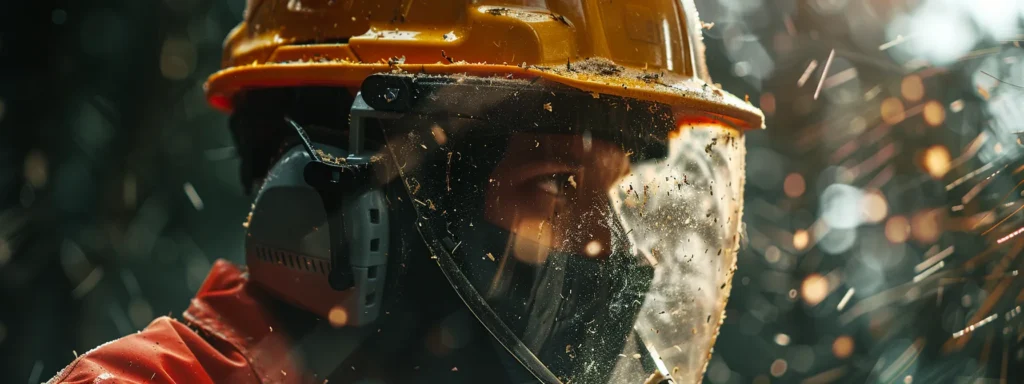
Selecting an appropriate safety helmet is a critical aspect of chainsaw safety gear. A well-designed helmet provides protection against falling debris and impacts, making it an essential piece of safety equipment. Factors such as weight, comfort, and the inclusion of a face shield are vital to consider. This section will detail the necessary features of headgear, ensuring users are equipped with the right protection for their needs.
Selecting an Appropriate Safety Helmet
Selecting an appropriate safety helmet is essential for chainsaw operators who face the risk of falling debris and potential impacts. A good helmet should fit securely without being too tight, allowing for comfort during prolonged use. Additionally, the helmet should come equipped with earmuffs to protect the ear canal from noise exposure, as chainsaws can produce sound levels that may damage hearing over time.
Comfort is key when selecting a safety helmet, as it can affect the user’s concentration and performance. Helmets with adjustable straps and ventilation can enhance wearability, making them suitable for various working environments. Furthermore, operators should consider helmets that include an integrated face shield or visor to protect against flying wood chips, ensuring that they are well-prepared for potential hazards.
Operators should always keep a first aid kit close at hand when working with chainsaws, as accidents can happen despite precautions. In case of any injuries, such as cuts or wounds sustained while using the equipment, having a first aid kit readily available can make a significant difference. This proactive approach, combined with the proper protective headgear, will provide the best chance of staying safe while effectively managing chainsaw tasks.
Features to Consider in Headgear
When selecting headgear for chainsaw users, it is essential to consider the fit and comfort. A well-fitting helmet reduces the risk of injury from falling debris while allowing the user to work effectively over extended periods. Features such as adjustable straps provide a secure fit, and helmets made from durable materials like Kevlar can enhance protection against impacts.
Incorporating earmuffs into the safety helmet design offers additional benefits. Chainsaws generate significant noise levels, which can impede hearing if not properly managed. Helmets with integrated earmuffs shield the ears from sound exposure, ultimately reducing the risk of long-term hearing damage while maintaining user focus and comfort during operation.
Lastly, eye protection should not be overlooked when considering headgear features. Many helmets come equipped with face shields or visors that can help safeguard against flying debris, minimising the risk of injuries to the face and eyes. Ensuring that the chosen headgear combines these protective elements will significantly enhance safety for anyone operating a chainsaw, promoting a more secure working environment.
Eye and Face Protection Equipment

Understanding the differences between safety glasses and face shields is vital for ensuring adequate eye and face protection when using a chainsaw. This section will also guide readers on choosing the right eye protection, considering factors such as visibility, comfort, and compatibility with a hard hat and earplugs. Additionally, the choice of materials like ballistic nylon and nylon will be examined, providing practical insights for effective protection.
Differences Between Safety Glasses and Face Shields
Safety glasses and face shields each serve distinct purposes in protecting users from hazards associated with chainsaw operations. Safety glasses primarily safeguard the eyes from flying debris and should fit snugly to prevent any particles from getting behind them. These glasses are lightweight and designed for comfort, making them ideal for users who need unobstructed visibility while working, especially when wearing a hard hat or noise-reducing earmuffs.
On the other hand, face shields provide broader coverage, protecting not only the eyes but also the face from larger debris and potential impacts. They are particularly effective when large pieces of wood or other materials might fly towards the user. While wearing chaps and a hard hat, a face shield can be an additional layer of protection, reducing the risk of injuries from falling branches or chainsaw kickback.
Both options play a vital role in a complete safety setup. Those working in noisy environments should consider how their chosen eye protection works alongside other safety gear that may reduce noise exposure, such as earmuffs or helmets designed for noise reduction. Every gardener or professional dealing with chainsaws should evaluate their needs to select the right combination of safety glasses, face shields, and appropriate protective clothing, including steel-toe boots and reinforced chaps, to enhance overall safety while operating power tools.
Choosing the Right Eye Protection
Choosing the right eye protection is essential when using a chainsaw, as it directly contributes to overall safety. Personal protective equipment, such as safety glasses or visors, should fit securely and comfortably to prevent debris from entering behind them. It is vital that users prioritise a clear and unobstructed view while operating chainsaws, as visibility can significantly affect performance and reduce the risk of accidents.
When looking for suitable eye protection, options made from durable plastic can provide the necessary resistance to flying debris. Safety glasses are lightweight and ideal for users requiring agility, while visors offer broader coverage for environments with a higher risk of larger debris. Both options should be compatible with other gear, such as hard hats and earmuffs, to ensure the user remains protected from potential hazards in noisy work environments where decibel levels may be elevated.
Furthermore, it is essential for users to ensure their eye protection is compliant with relevant safety standards. Checking for certifications and recommended features can enhance protection and build confidence during chainsaw operations. By selecting the appropriate gear, individuals can effectively safeguard their eyes and face, significantly lowering the potential for injuries while working with powerful tools.
Hearing Protection Devices

Chainsaws produce high noise levels that can lead to hearing damage if proper protective measures are not taken. This section examines the risks of noise exposure associated with chainsaw operation, particularly in logging activities. It will also discuss various types of hearing protectors available, enhancing user awareness of the importance of safeguarding against noise while working amidst sawdust and debris.
Risks of Noise Exposure From Chainsaws
Chainsaws are powerful tools that generate high noise levels, often exceeding 100 decibels. Prolonged exposure to such noise can lead to permanent hearing loss, making it crucial for operators to understand the risks associated with noise exposure. Regular use of chainsaws, especially in logging or extensive gardening tasks, places users in environments where noise-induced hearing damage becomes a significant concern.
The impact of noise exposure from chainsaws extends beyond immediate discomfort; it can lead to long-term health issues. For instance, operators may experience early symptoms of hearing loss, such as ringing in the ears, which can distract and affect concentration. This distraction not only hinders performance but also increases the likelihood of accidents while working with sharp and heavy equipment like chainsaws.
To mitigate these risks, users should prioritise the use of appropriate hearing protection devices. Options such as earmuffs or earplugs designed for high-decibel environments can effectively reduce the sound levels reaching the ears. By investing in quality hearing protection, chainsaw operators can maintain their hearing health while ensuring they remain focused and safe during their tasks.
Types of Hearing Protectors
There are several types of hearing protectors available for chainsaw operators, each designed to address specific noise exposure challenges. Earmuffs are popular among professional and amateur gardeners due to their ability to reduce sound levels significantly, often by 20 to 30 decibels. They provide a comfortable fit over the ears and can easily be worn over safety helmets, making them practical for extended use during heavy-duty tasks.
Earplugs offer another effective solution, particularly in situations where earmuffs can become bulky or uncomfortable. These small devices can fit snugly within the ear canal, providing a discreet option for those working in quieter environments. Various sizes and materials are available, allowing users to find a comfortable fit while ensuring adequate noise reduction, thus protecting hearing during prolonged chainsaw operations.
Some products combine earmuffs and earplugs features for optimum protection, catering to users needing maximum sound attenuation in especially noisy settings. Using a product with ratings specifically designed for high-decibel environments grants chainsaw operators peace of mind while working. Investing in quality hearing protection gear ensures that gardeners can focus on their tasks without compromising their long-term hearing health.
Protective Clothing for Body Safety

Chainsaw-protective trousers and chaps are essential for safeguarding the legs from cuts and abrasions while working with powerful tools. Protective jackets offer additional safety by shielding the upper body from various hazards. Choosing the right materials for protective wear is equally important, as they influence durability and comfort. This section provides insights into these key components of chainsaw safety gear.
Chainsaw-Protective Trousers and Chaps
Chainsaw-protective trousers and chaps are essential for anyone working with chainsaws, as they provide a crucial barrier against cuts and abrasions. These safety garments are typically made from cut-resistant materials that can significantly reduce the severity of injuries in the event of an accidental chain contact. Users should consider selecting trousers or chaps that comply with the relevant safety standards to ensure maximum protection while operating chainsaws.
When choosing between chainsaw trousers and chaps, individuals must assess their specific needs and working conditions. Chainsaw trousers are designed to offer comprehensive coverage, protecting the entire lower body, while chaps can be worn over regular clothing, providing flexibility. For example, a gardener working in outdoor environments with varying temperatures may prefer chaps for ease of wear and ventilation, whereas a professional arborist might benefit more from the all-round protection of trousers.
In addition to protection, comfort and fit should be a priority when selecting chainsaw-specific trousers or chaps. Many models feature adjustable straps and breathable fabrics, making them suitable for long periods of use. Ensuring that the chosen protective clothing is comfortable and allows for freedom of movement can greatly enhance performance and safety, enabling the user to focus on their tasks without distractions.
Protective Jackets and Their Benefits
Protective jackets play a crucial role in the safety gear for chainsaw operators, designed specifically to shield the upper body from potential hazards. Constructed from cut-resistant materials, these jackets provide a barrier against accidental chainsaw contact, which can lead to severe injuries. For gardeners and professionals alike, investing in a high-quality protective jacket is essential for minimising risks while working in demanding environments.
In addition to cut protection, these jackets offer benefits such as enhanced visibility and weather resistance. Many models come in high-visibility colours, ensuring that users are easily seen in various working conditions. Furthermore, protective jackets often feature weatherproof materials, making them suitable for use in rain or windy conditions, thereby keeping the operator comfortable while ensuring safety during tasks.
When selecting a protective jacket, it is important to consider fit and breathability. A well-fitted jacket allows for ease of movement, enabling operators to perform tasks effectively without restriction. Breathable fabrics can reduce heat build-up, particularly in warm weather situations, ensuring that the gardener remains focused and comfortable throughout their workday. Awareness of these factors will assist in making informed choices about protective clothing:
- Cut-resistant materials for upper body protection
- High visibility for enhanced safety
- Weatherproofing for all environments
- Comfortable fit to facilitate movement
- Breathability for temperature control
Material Considerations for Protective Wear
When selecting protective wear for chainsaw operation, material choice plays a critical role in ensuring adequate safety and comfort. Protective clothing should be made from cut-resistant materials, such as Kevlar or other specialised fabrics, which can effectively withstand accidental blade contact during use. These materials not only reduce the risk of severe injuries but also help enhance the durability of the clothing, allowing for prolonged use in challenging environments.
In addition to cut resistance, breathability is another crucial factor in material selection. Operators often work for extended periods, making comfortable and moisture-wicking fabrics essential for maintaining a suitable body temperature. Fabrics that incorporate ventilation features help prevent overheating, ensuring that the user can focus on the tasks at hand without the distraction of discomfort from excessive heat or moisture.
Furthermore, it is beneficial for protective clothing to have waterproof or water-resistant properties. Chainsaw work frequently occurs in various weather conditions, and gear that repels water can keep operators dry and comfortable. Selecting multi-functional materials that offer cut resistance, breathability, and weather resistance will significantly enhance the overall safety and performance of chainsaw users, providing peace of mind while they work.
Hand Protection With Safety Gloves

Hand protection is vital for anyone operating a chainsaw, and effective gloves are a key component of chainsaw safety gear. This section will examine the features of effective chainsaw gloves, focusing on cut resistance, grip, and comfort. It will also guide users in finding the right fit and material, ensuring optimal protection and functionality during chainsaw operations.
Features of Effective Chainsaw Gloves
Effective chainsaw gloves are designed with cut-resistant materials to significantly reduce the risk of injury during operation. Manufacturing standards often utilise specialised fabrics that can withstand accidental blade contact, providing an essential layer of protection for the hands. This feature is particularly crucial for gardeners and professionals who handle chainsaws regularly.
A firm grip is another essential characteristic of chainsaw gloves, allowing users to maintain control over the tool even in challenging conditions. Gloves equipped with textured palms enhance grip, ensuring that chainsaw operators can manage their tools safely and efficiently. This feature aids in preventing slips or mishaps that can occur when handling a powerful piece of equipment.
Additionally, comfort and fit play a vital role in the effectiveness of chainsaw gloves. Properly fitted gloves enable freedom of movement and dexterity, allowing users to operate chainsaws with precision. Choosing gloves that are breathable and moisture-wicking can help keep hands cool and dry during extended use, ultimately improving safety and user performance in the field.
Finding the Right Fit and Material
Finding the right fit for chainsaw safety gloves is essential to ensure maximum protection and comfort during operation. Gloves that are too tight can restrict movement and lead to fatigue, while those that are too loose may slip, reducing grip and control over the chainsaw. Gardeners and professionals should try on gloves before purchasing, ensuring that they allow for dexterity without compromising safety.
The material used in chainsaw gloves significantly impacts their performance during operation. Gloves made from cut-resistant materials, such as Kevlar or similar fibres, provide vital protection against accidental chainsaw contact. Operators should also consider gloves with additional grip features, such as textured palms, which enhance control and stability when handling a chainsaw, crucial for ensuring safety while working.
Breathability and comfort are key aspects when selecting gloves for chainsaw use. Those who operate chainsaws for extended periods may find that gloves made from moisture-wicking fabrics help prevent sweat build-up, maintaining comfort and dexterity. Investing in high-quality gloves that balance fit, material, and breathability ultimately leads to enhanced safety and improved performance in the field.
Foot Protection: Safety Boots
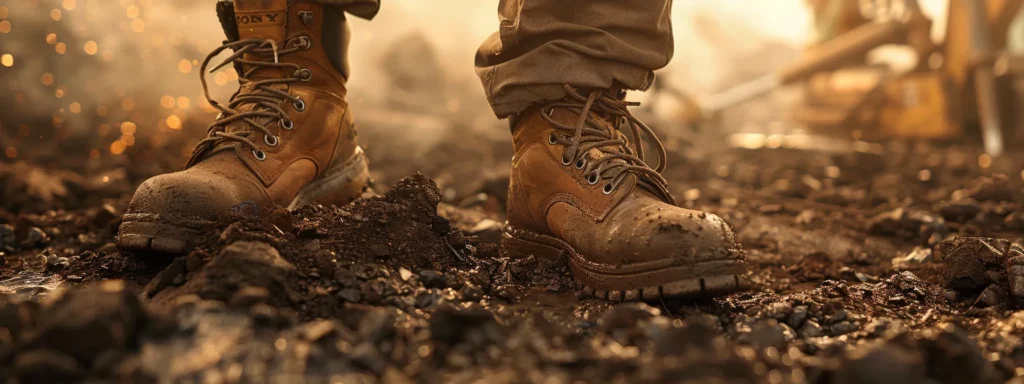
Steel-toe boots are a crucial element of chainsaw safety gear, providing essential protection against heavy falling objects and sharp tools. Slip-resistant and cut-resistant footwear adds further protection by ensuring stability on various surfaces and reducing the risk of cuts. This section will discuss the significance of these features, guiding users in selecting the optimal footwear for safely operating chainsaws.
Importance of Steel-Toe Boots
Steel-toe boots are an essential part of chainsaw safety gear, providing critical protection for the feet and toes against heavy objects. In a gardening or forestry environment, the risk of falling branches or equipment is significant, making steel-toed footwear indispensable for preventing serious injuries. By investing in quality steel-toe boots, gardeners and professionals can ensure they are adequately protected while operating chainsaws, offering peace of mind during tasks.
In addition to protecting against falling debris, steel-toe boots feature other important safety elements, such as slip-resistant soles. These soles prevent slips and falls, especially in wet or uneven outdoor conditions, which is often encountered while working in gardens or wooded areas. With a sturdy pair of slip-resistant boots, operators can maintain better stability and control while using a chainsaw, reducing the risk of accidents.
Choosing steel-toe boots that are comfortable and fitted correctly enhances the overall safety experience. Properly fitted boots allow for ease of movement, reducing foot fatigue during prolonged use. Gardeners should consider factors such as moisture-wicking materials and cushioning when selecting footwear, as these features contribute to long-term comfort and performance while ensuring foot protection remains a priority:
- Steel-toe protection against heavy objects
- Slip-resistant soles for improved stability
- Comfortable fit to reduce fatigue
Slip-Resistant and Cut-Resistant Footwear
Slip-resistant and cut-resistant footwear plays a vital role in enhancing safety for chainsaw operators. These boots are specifically designed to prevent slips on uneven or wet surfaces commonly found in gardening and forestry tasks. With features like specialised tread patterns, they provide excellent traction, ensuring that the user maintains stability while handling equipment.
In addition to preventing slips, cut-resistant boots are essential for protecting the feet from sharp tools and falling debris. Boots made from reinforced materials, such as leather and synthetic fibres, offer a barrier that helps minimise injury risks. Choosing footwear that adheres to safety standards tailored for chainsaw use assures gardeners and professionals they are well-protected during their operations.
When selecting slip-resistant and cut-resistant footwear, it is important to ensure a proper fit for maximum comfort and mobility. Footwear that is too tight can lead to discomfort, while loose boots may cause trips and falls. Users should look for boots with moisture-wicking properties and cushioned soles to enhance comfort during prolonged use and improve overall work efficiency:
- Ensures stability on wet or uneven surfaces
- Protects feet from sharp tools and debris
- Comfortable fit to reduce fatigue
Conclusion
Understanding the importance of comprehensive chainsaw safety gear is crucial for anyone operating this powerful tool. By equipping themselves with essential protective equipment such as helmets, gloves, and cut-resistant clothing, users can significantly reduce the risk of injury. Compliance with legal safety standards not only enhances personal safety but also promotes confidence in the workplace. Prioritising safety gear will ensure that every gardening task is performed effectively, making the work environment safer for everyone involved.
-

Webb WEV20PS 20v Cordless Pruning Saw 150mm
£124.95 Buy Now -

Webb WEV20EXTPS 20v Cordless Pruning Saw 150mm with Extension Pole
£124.95 Buy Now -

Webb WEPCS18 Petrol Chainsaw 460mm
£165.00 Buy Now -

Webb WEPCS16 Petrol Chainsaw 400mm
£149.00 Buy Now -

Webb WEECS402200 Electric Chainsaw 400mm
£99.95 Buy Now -

Stanley FatMax V20 18v Cordless Chainsaw 300mm SFMCCS630 SFMCCS630
£149.95 Buy Now -

Sealey CP40VCS Twin 20v Cordless Chainsaw 350mm
£138.95 Buy Now -

Sealey CP20VCHS 20v Cordless Chainsaw 250mm
£105.95 Buy Now -

Makita UC025G 40v Max XGT Cordless Brushless Chainsaw 350mm
£343.95 Buy Now -

Draper GCS1800D Chainsaw 350mm
£117.95 Buy Now -

Bosch ADVANCEDCHAIN 36V-35 36v Cordless Chainsaw 350mm
£307.95 Buy Now -

Einhell Professional GE-LC 36/35 Li 36v Cordless Brushless Chainsaw 350mm
£141.95 Buy Now
Chainsaw Buying Guide Articles
- Essential Chainsaw Buying Guide for New Homeowners
- How to Select the Perfect Pole Chainsaw for Trimming High Branches
- Unlocking the Benefits of Corded Electric Chainsaws
- Choosing the Right Chainsaw: Professional vs Consumer Models Comparison – Buying a Chainsaw Q&As
- Chainsaw Brands Comparison: Discover Your Ideal Match
Chainsaw Maintenance Articles
- Solving Chainsaw Bar Oiling Issues: A Step-by-Step Guide
- Essential Chainsaw Maintenance Tips for Enhanced Durability and Performance
- How to Select the Best Chainsaw Bar Oil for Your Needs
- Comprehensive Chainsaw Maintenance Guide for Enhanced Safety
- Step-by-Step Guide to Changing Chainsaw Spark Plugs
- Choosing the Perfect Replacement Chains for Your Chainsaw
- Step-by-Step Guide on Replacing Chainsaw Spark Plugs
- How to Select the Best Chainsaw Bar Oil for Your Needs
- Selecting the Ideal Battery for Your Electric Chainsaw: A Comprehensive Guide
- Step-by-Step Guide to Cleaning Your Chainsaw Air Filter Effectively
Chainsaw Operation Techniques Articles
- Step-by-Step Guide to Changing Chainsaw Spark Plugs
- Choosing the Perfect Replacement Chains for Your Chainsaw
- Comprehensive Guide to Proper Chainsaw Handling and Safety
- How to Select the Perfect Chainsaw Bar and Guide for Your Needs
- Effective Solutions for Chainsaw Starting Issues
- Top Tips for Boosting Fuel Efficiency in Petrol Chainsaws
Chainsaw Repair Advice Articles
- Comprehensive Guide to Fixing Chainsaw Starting Issues
- Step-by-Step Guide on Replacing Chainsaw Spark Plugs
- How to Select the Best Chainsaw Bar Oil for Your Needs
- Step-by-Step Guide to Cleaning Your Chainsaw Air Filter Effectively
- How to Replace a Chainsaw Chain: Your Comprehensive Guide
- Effective Solutions for Chainsaw Starting Issues
Chainsaw Safety Tips Articles
- Essential Chainsaw Safety Features: A Comprehensive Guide for Buyers
- Stay Safe with Chainsaw Safety Gear Essentials: Your Guide
- Chainsaw Safety: Strategies to Avoid Tree Cutting Accidents
- Essential Chainsaw Techniques for Safely Managing Tree Limbs and Branches
- Chainsaw Safety and Handling: Mastering Proper Techniques
- Comprehensive Guide to Proper Chainsaw Handling and Safety
- Essential Winter Chainsaw Storage Tips to Protect Your Equipment
- Mastering Chainsaw Safety: A Guide to Preventing Kickback
- Comprehensive Guide to Essential Chainsaw Safety Gear
- Expert Tips on Chainsaw Kickback Prevention: A Safety Guide
Chainsaw Storage Articles
- The Essential Guide to Storing Your Chainsaw Safely
- How to Select the Best Chainsaw Storage Case or Bag for Your Needs
Electric vs Petrol / Gas Chainsaws Articles
- Durability Comparison: Gas Versus Electric Chainsaws
- How to Decide on Electric Versus Gas Chainsaws: A Detailed Guide
- Reducing Your Carbon Footprint With Electric Chainsaws
- Why Opting for a Battery Powered Chainsaw Is a Smart Choice
- Selecting the Ideal Battery for Your Electric Chainsaw: A Comprehensive Guide
- Durability Comparison: Gas Versus Electric Chainsaws
- Electric vs Gas/Petrol Chainsaws: A Detailed Comparison of Power Output
- Petrol vs Electric Chainsaws: Explore the Pros and Cons
Tree Cutting Techniques Articles
- Mastering Chainsaw Cutting Angles for Precision Tree Felling
- How to Select the Perfect Chainsaw for Your Tree Cutting Needs
- Essential Safety Tips for Cutting Large Trees Using a Chainsaw
- Essential Chainsaw Techniques for Safely Managing Tree Limbs and Branches
- Chainsaw Safety: Strategies to Avoid Tree Cutting Accidents
- Chainsaw Safety and Techniques for Efficient Tree Felling
Types of Chainsaws Articles
- Why Opting for a Battery Powered Chainsaw Is a Smart Choice
- Reducing Your Carbon Footprint With Electric Chainsaws
- Uncovering the Evolution: History of Chainsaws Explained
- Unlocking the Benefits of Corded Electric Chainsaws
- Comparing Electric and Petrol Chainsaws: Key Factors to Consider
- Affordable Chainsaws for Beginners: A Buyer’s Guide
Chainsaw Accessories Articles
Articles Coming Soon



